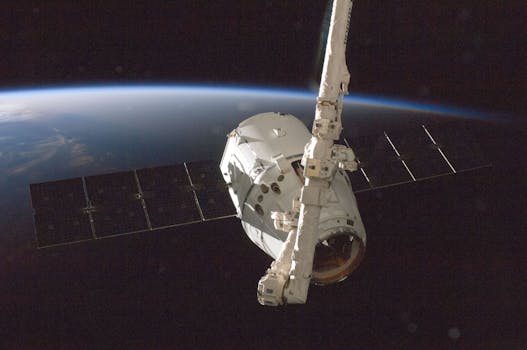
LEO Satellites: The Future of Global Connectivity
LEO satellites, or Low Earth Orbit satellites, are a type of satellite that orbits the Earth at an altitude of around 160 to 2,000 kilometers. LEO satellites have been gaining popularity in recent years due to their ability to provide faster and more reliable internet connections compared to traditional geostationary satellites. In this article, we will explore the benefits and applications of LEO satellites and how they are changing the way we communicate and access the internet.
The use of LEO satellites is not new, but recent advancements in technology have made them more efficient and cost-effective. One of the main advantages of LEO satellites is their low latency, which allows for real-time communication and data transfer. This makes them ideal for applications such as video conferencing, online gaming, and remote healthcare. Additionally, LEO satellites have a smaller footprint and are less expensive to launch than traditional satellites, making them more accessible to a wider range of users.
Applications of LEO Satellites

LEO satellites have a wide range of applications, including providing internet access to remote and underserved communities, supporting emergency response and disaster relief efforts, and enabling IoT (Internet of Things) connectivity. They can also be used for Earth observation, weather forecasting, and navigation. Furthermore, LEO satellites can provide a backup for traditional telecommunications infrastructure in the event of a disaster or outage, ensuring that critical communication services remain available.
The use of LEO satellites is also being explored for military and government applications, such as secure communication, surveillance, and reconnaissance. Their ability to provide secure and reliable communication makes them an attractive option for military and government agencies. Moreover, LEO satellites can be used for scientific research, such as studying the Earth’s climate, monitoring ocean currents, and tracking space weather.
Challenges and Limitations

While LEO satellites offer many benefits, there are also challenges and limitations to their use. One of the main challenges is the need for a large constellation of satellites to provide global coverage. This can be expensive and require significant investment in infrastructure. Additionally, LEO satellites have a shorter lifespan than traditional satellites, typically ranging from 5 to 10 years, which means they need to be replaced more frequently.
Another challenge is the issue of space debris, as the increased number of LEO satellites in orbit can contribute to the growing problem of space junk. This can pose a risk to other satellites and spacecraft, as well as to the environment. To mitigate this risk, satellite operators and manufacturers are working to develop more sustainable and responsible practices for launching and operating LEO satellites.
Conclusion

In conclusion, LEO satellites are revolutionizing the way we communicate and access the internet. Their ability to provide faster and more reliable connections makes them an attractive option for a wide range of applications, from providing internet access to remote communities to supporting emergency response efforts. While there are challenges and limitations to their use, the benefits of LEO satellites make them an exciting and promising technology for the future of global connectivity.
See more:




